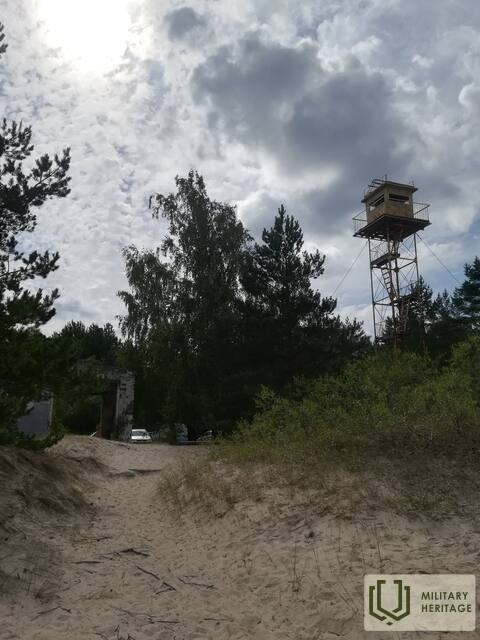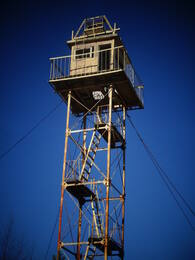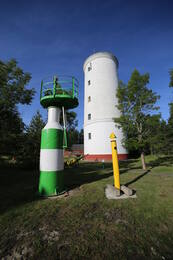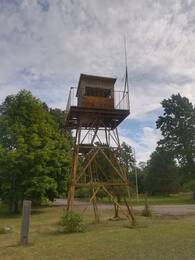Зона пограничного режима
О временах в зоне пограничного режима.
В первый момент, когда я начал работать в Слитерском государственном заповеднике, я еще толком не знал пограничного режима. Однажды вечером я сел на последний автобус до Мазирбе, где нас остановили пограничники. Один из них посмотрел на мой паспорт и заявил, что я живу в Слиттере, а не в Мазирбе. Но я спросил его: «А печать там есть» (а там (в паспорте) штамп?). Он отказался от руки, но пустил меня в Мазирбе.
В свою очередь, мой муж (который в то время работал в лесхозе Эзери) рассказал мне о случае, когда однажды летом он решил поехать из Мелнсилы в Колку на берегу моря. Он так и делал, пока не услышал "Стой, руки верх!" (Встаньте, руки вверх!). Он прошел несколько километров с руками до Уша, где его личность была обнаружена в гнезде столба (в то время были портативные телефоны и определенные точки подключения, с которых с ним можно было связаться). После этого его уволили.
У Уши на тот момент была мобильная ракетная база. До наших дней сохранились траншеи и котлованы. Прибрежная дорога также была построена как стратегический объект. Сбоку от него похоронили рэперов (сохранившиеся места), чтобы можно было определить точные координаты.
Связанная хронология
Связанные объекты
Пост погранохраны Мазирбе
Советский пост погранохраны располагался в здании бывшего Морского училища, рядом с ним находится хорошо сохранившаяся советская пограничная вышка. Вторая смотровая вышка находится прямо на берегу моря рядом с парковкой. Смотровые вышки напоминают о временах советской оккупации, когда Мазирбе была закрытой приграничной зоной, и гражданским лицам разрешалось выходить на берег моря только в определенных местах в светлое время суток. Вышка погранохраны - один из наиболее хорошо сохранившихся объектов такого рода на латвийском побережье. Залезать опасно!
Маяк Овиши и береговая погранохрана
Маяк Овиши находится в Таргальской волости, Овиши, на Курземском побережье и является старейшим маяком в Латвии - он был построен в 1814 году. Высота башни маяка Овиши составляет 37 метров. Маяк имеет двухцилиндровую конструкцию: его диаметр составляет 11,5 м, а внутри каменной стены находится вторая башня диаметром 3,5 м. Двухцилиндровый маяк такого типа в 18-19 веках в Европе использовался, в том числе в качестве оборонительного сооружения на случай нападения врага. Музей маяка Овиши обладает самой богатой коллекцией маякового оборудования и предметов морской навигации среди всех маяков-музеев Латвии. В ясную погоду с маяка Овиши можно увидеть маяк Ирбе.
В конце Второй мировой войны в районе маяка Овиши располагался штаб батальона Бемингера немецкой армии и 4-я батарея 530-й морской артиллерийской дивизии с несколькими зенитными орудиями. Вероятно, у подножия маяка находился радиомаяк и инфракрасный приемник (Donau Gerät). Когда-то возле маяка располагался советский пограничный пост, но до наших дней постройки советских времен не сохранились. Здание вокзала Овиши до сих пор находится на территории маяка.
Постоянная экспозиция Павилостского краеведческого музея
В Павилостском краеведческом музее можно осмотреть выставку «Павилоста - закрытая зона» о жизни Павилосты в годы советской оккупации - исполнительной власти, приграничной зоне, рыбном колхозе, культурной и повседневной жизни. В дополнение к постоянной экспозиции была представлена интерактивная эмоционально насыщенная цифровая выставка на двух языках и аудиовизуальная инсталляция, где можно посмотреть фильм о Павилосте.
В музее создана новая выставка «Золотые песчинки Павилосты». Цифровая выставка позволяет увидеть события прошлого, развитие Павилосты и самые важные события с 1918 года до наших дней. О военном наследии рассказывает раздел освободительной войны о борцах за свободу Латвии и временах советской оккупации
Морская школа Мазирбе
Советская пограничная башня в этом комплексе - одна из наиболее хорошо сохранившихся на латвийском побережье. К сожалению, состояние зданий плохое, на территории комплекса находится площадка для погрузки/разгрузки винтовок, а также сохранился привод и фрагменты траншей.
Пост береговой охраны располагался в здании бывшей морской школы. В постсоветский период в части зданий предлагалось жилье.
Вторая вышка советской пограничной охраны расположена примерно в 400 м от пляжа, но, к сожалению, она находится в аварийном состоянии. Однако не более чем в 500 м от пляжной башни в сторону Сикрагса находится кладбище лодок "Мазирбе".
Кладбище лодок Мазирбе
Мазирбе, исторически известный как крупнейший центр ливов, примечателен единственным на латвийском побережье кладбищем рыбацких лодок. Оно было построено в 1960-х годах, последние лодки были привезены в 1976 году. Лодки оказались здесь в результате ограничений на рыбалку и возраста.
Сегодня в Мазирбе насчитывается менее десяти затонувших рыбацких лодок, но исторически их было гораздо больше. Лодки покоятся и в других приморских деревнях, но именно на лодочном кладбище Мазирбе это наиболее заметно сегодня.
Мазирбское лодочное кладбище - единственное в своем роде на латвийском побережье.










